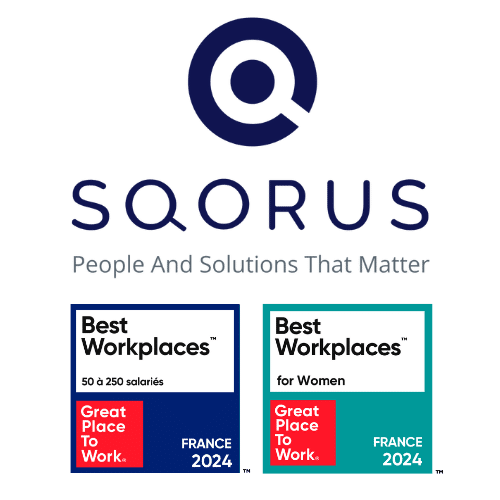5 reasons to develop workforce analytics in your company
Here are 5 reasons to develop Workforce Analytics in your organization:
- At the strategic level, Workforce Analytics allows for a better organization of human capital by placing each employee in the position that is best suited to his or her skills and to the company’s needs.
- As far as the budgetary aspect is concerned, workforce analytics aims to make the company more efficient financially. It is therefore relevant to evaluate payroll expenses by team, by position with real time data. Such data analysis allows for ROI measurement.
- In terms of process, the workforce analytics method consists of exploiting a quantity of data from the HR function and extracting the most relevant information. It can then analyze the effectiveness of a compensation plan or a workplace wellness initiative, etc.
- In terms of operational performance Workforce analytics is essential for HR departments that want to measure the impact of employees on the company’s productivity.
How does HR data help optimize career and talent management?
Thanks to HR analytics and big data, the HR function now has precise and powerful means to optimize career management and talent management. It has a lot of data on the needs of employees thanks to the various interviews conducted throughout the year, the CV library, their professional aspirations such as acquiring new skills, etc. With a view to career development or internal mobility, Big Data algorithms will help to identify the typical profile of the skills repository for the positions to be filled.
With all this data integrated into HR analytics, human resource management can more easily optimize career management and talent management. Indeed, the HR department can set up a career plan for each employee. Similarly, in order to optimize the development prospects of each individual, a personalized training plan can be suggested within the HR analytics tools. As a bonus, if career management policy is well mastered, it can become the employer brand for potential candidates.
The contribution of artificial intelligence to career management
Artificial intelligence introduced in an HRIS solution brings considerable advantages: time saving, efficiency and relevance at all levels of the HR department. It also brings improvements to HR processes.
In terms of career management, artificial intelligence is able to build a customized career plan by using the data from evaluation interviews. It establishes a competency map by employee, which is a repository of the company’s competencies in real time. This mapping of employees’ skills will then be explored by AI to find the best profile that will match the positions to be filled internally. It is also effective for searching for external profiles since it uses the information contained on the CVs of potential candidates. It can therefore operate on job boards or on professional social networks. However, qualitative data from appraisal interviews will remain difficult to exploit, as they do not have a frame of reference.
Artificial intelligence is also formidable in finding the most suitable training according to the wishes of employees in the context of professional development or the acquisition of new skills. This feature can greatly boost employees’ career plans. It can also become a strong employer brand argument in the eyes of potential candidates, and help assert the company’s presence on social networks.
The contribution of artificial intelligence to career management
Artificial intelligence introduced in an HRIS solution brings considerable advantages: time saving, efficiency and relevance at all levels of the HR department. It also brings improvements to HR processes.
In terms of career management, artificial intelligence is able to build a customized career plan by using the data from evaluation interviews. It establishes a competency map by employee, which is a repository of the company’s competencies in real time. This mapping of employees’ skills will then be explored by AI to find the best profile that will match the positions to be filled internally. It is also effective for searching for external profiles since it uses the information contained on the CVs of potential candidates. It can therefore operate on job boards or on professional social networks. However, qualitative data from appraisal interviews will remain difficult to exploit, as they do not have a frame of reference.
Artificial intelligence is also formidable in finding the most suitable training according to the wishes of employees in the context of professional development or the acquisition of new skills. This feature can greatly boost employees’ career plans. It can also become a strong employer brand argument in the eyes of potential candidates, and help assert the company’s presence on social networks.
An HRIS to map employee skills
To establish a competency map, the implementation of an HRIS is the ideal solution to simplify and automate the creation of this repository. This competency management software is an interactive and intuitive interface that will really facilitate the work of human resources. With all the available data, the HRIS will create a competency map in a visual and organized way. It highlights:
- a graphical visualization of skills by trade;
- career development opportunities;
- full access to the company’s human capital profiles;
- a graph correlating the existing skills with the company’s needs;
- a visualization of the gaps between the level of skills required for a position and those of the employee who occupies it.
These visuals allow you to see at a glance the missing skills and the needs of the company for a given period of time. From this observation, it is easier to envisage an increase in the skills of employees who need them.
Some applications dedicated to the identification of competencies also exist on the market and have the advantage of being very flexible for competency management (Wiserskill, 360 Talents….). However, in order to make full use of the competencies, they will have to be connected to the HRIS (annual interviews, other administrative and career data) in order to make the most of this data.
How can you optimize your HR data?
Optimize your HR strategy with the most effective management tools on the market, and give your company a head start.
See also our feature on "HR strategy management tools".
- What are the key issues facing HR departments today?
- Organization, talent management, recruitment: priority HR projects?
- Human resources management: what HR strategies for the future?
- Best practices to manage your HR strategy in an optimal way
- The different HR management tools to carry out your HR strategy
- HRIS software: the different areas of intervention for the HR function
- How to convince your management to invest in an HRIS tool?
- Is it necessary to be accompanied in the management of an HR strategy?
- What indicators should be defined to measure the performance of an HR strategy?
- HR strategy: how to achieve effective HR reporting?
- Who should drive HR projects in the company?
- Setting up a working group for an HR project: who should be involved?
Contact
A project? A request?A question?
Contact us today and find out how we can work together to make your company’s digital future a reality.













